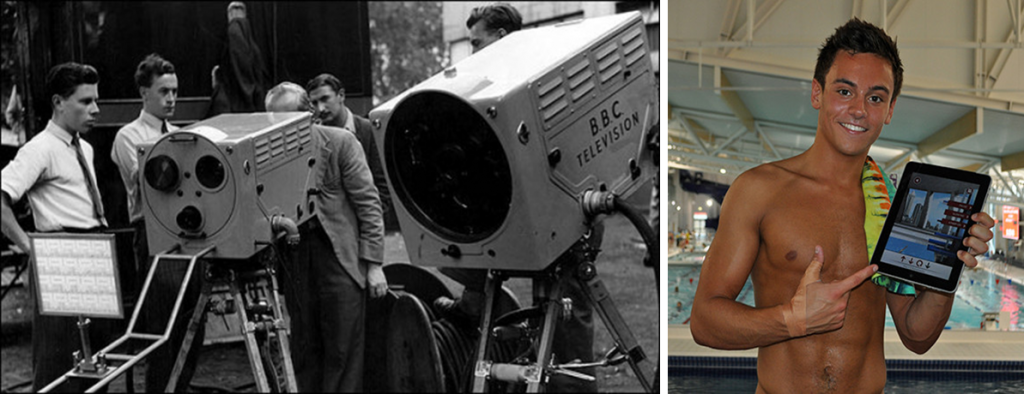The Olympics returns to London for a third time this summer – more than 60 years since it last hosted the Games in 1948. More than 10,000 athletes will travel to the games from around 200 countries – that’s over double the number of competitors taking part 64 years ago. What else will have changed for people coming to see the athletes compete?

Visitors to the Olympic Park will be able to eat at the world’s largest McDonalds, which will be capable of seating 15,000 people!
While the beef used at McDonalds might all be British, the chicken has been flown over from as far afield as France, Thailand and even Brazil.
In 1948 Britain was still affected by rationing so it was largely up to spectators to make their own lunch – even athletes had to pack their own food.
Just the presence of so many international visitors will be a far cry from the Olympic Games of 50 years ago.
These days international travel is more accessible than ever, so it’s no wonder that Heathrow airport predicts 500,000 visitors from outside the UK will descend on London over the course of the Games.
While the majority of people visiting the Olympics this year will come by plane, in 1948 those wealthy enough to come to London will have done so by boat.
There’s much more merchandise available today – everything from model double decker buses to stylish jewellery. However, only around 9% of the merchandise is actually made in the UK. The other 91% will have been shipped over from the likes of Turkey, the Philippines, and the host country for the last Olympic Games, China.
Back in 1948 there was no such thing as ‘official’ Olympic merchandise – anybody could make it. One of the highlights was fine silk scarves made by Jacqmars – these only travelled from as far as Manchester though!
One last difference between the two Games will be tweets. Smartphones are much more common now – in fact, Samsung, an Olympic sponsor, has travelled with the Olympic Torch around the country promoting its latest handset.
There are more ways for people to stay in touch with the Games than ever. In 1948, by contrast, most people would keep up with what was happening by radio or reading about it the next day in the newspaper.
However, the 100,000 television sets in the country could access the live coverage that the BBC transmitted using outdoor broadcasting equipment housed in a large van that drove between the Olympic venues.